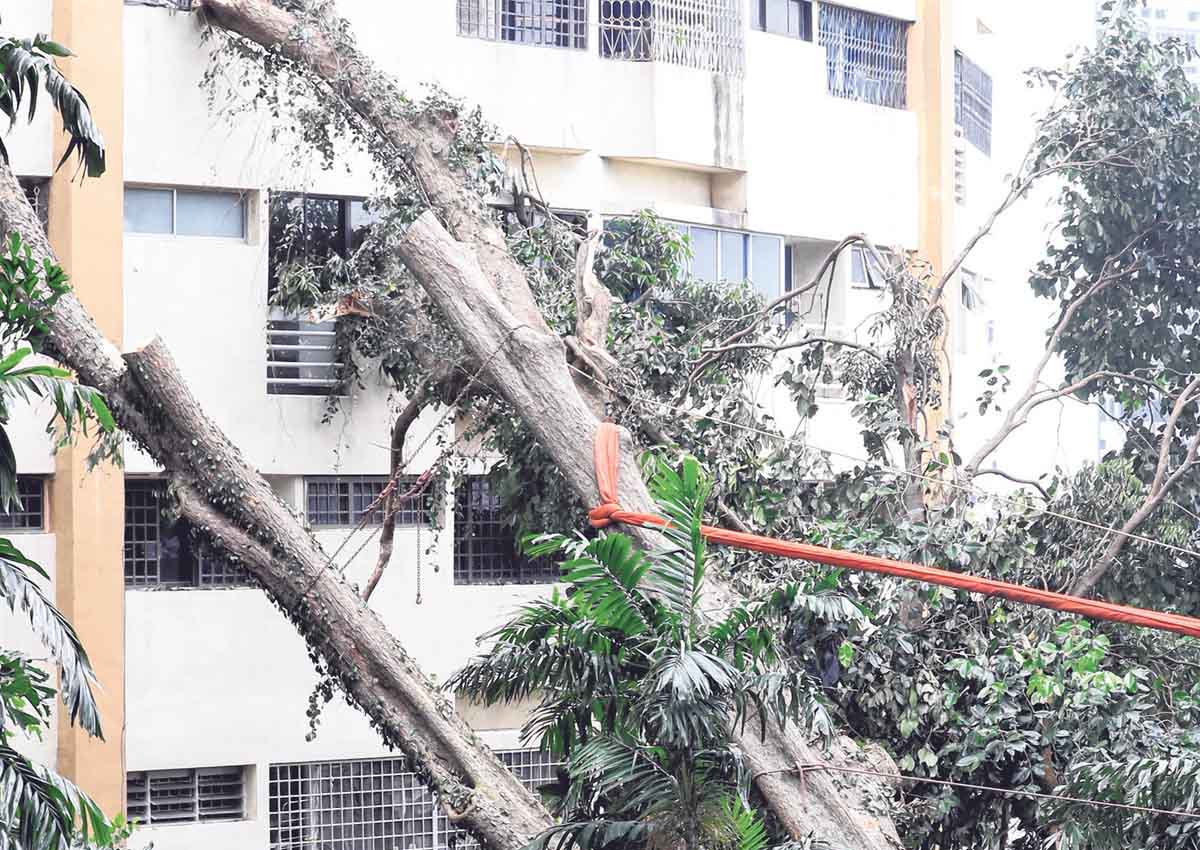A 12-storey high tree that crashed through five apartments at Pearl Bank Apartments in Outram on Sept 11 had been flagged as a risk by its management council more than a year ago.
Residents had been worried that the tree, a Purple Millettia that was more than 60 years old, would end up collapsing onto the building, its management council chairman Cecilia Seet told The Straits Times.
“We warned NParks (National Parks Board) and gave them feedback last August that the tree, in particular, was very tall.
“It stood on a slope and there are strong winds in the area… so we were very concerned for the safety of residents,” she said.
While no one was hurt, some apartments suffered damage, with windows shattered, window grilles going off their hinges and bathroom fittings broken, for instance.
In response to queries, NParks said the tree was last inspected in February by its arborists, who found it healthy and did not observe any visible signs of damage or disease.
A month earlier, the tree had also been pruned to lighten the weight of the crown.
NParks noted reports of strong winds of at least 50kmh and rain over the weekend of Sept 10 and Sept 11, which it said probably weakened the tree.
After the incident, NParks also checked the trees around Pearl Bank Apartments last Tuesday and found them to be healthy.
The annual number of fallen branches and trees under NParks’ management has dropped from more than 2,500 before 2004 to about 1,300, for the past decade or so.
An accountant living there who gave her name as Madam Seow, 48, said parts of her bedrooms and living room were damaged by the tree but is relieved that her family is safe.
NParks said it is in contact with residents whose windows were damaged during the early morning incident.
The tree that crashed was one of only two heritage Purple Millettia trees here.
NParks said all trees are inspected by staff who look out for abnormalities such as damage to the trunk, wood decaying fungi and broken branches, among other things.
If abnormalities are detected, staff will conduct a second level of inspection with equipment such as a sonic tomograph or resistograph to detect internal decay.
All trees are inspected every six to 24 months. Where necessary, crown reduction pruning is done to reduce the weight so that they can better withstand strong winds.
NParks group director of parks Chuah Hock Seong said it is not possible to eliminate the risk of tree falls, as even healthy trees can be affected by gusty winds and heavy rain.
melodyz@sph.com.sg

Get MyPaper for more stories.

















